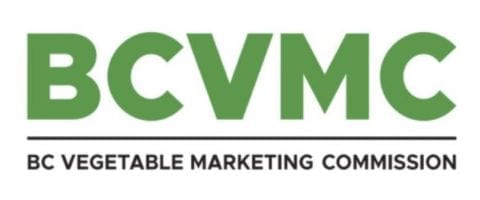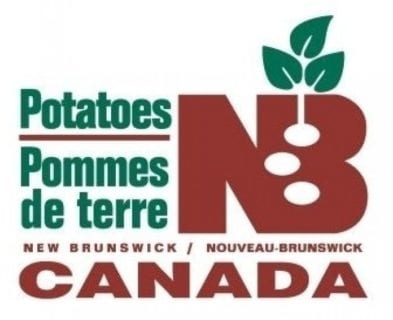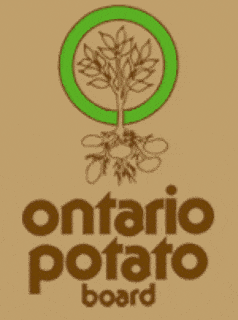Here is your provincial potato association updates from across Canada for the spring 2022 issue of Spud Smart.

British Columbia
By: Hugh Reynolds with Reynalda Farms in Delta, B.C.
British Columbia is having a normal spring and those who plant early potato varieties are busy planting.
The effects of the fall floods are mostly past with repairs mostly done. There was an initial concern about fields being overcapacity, but the flood waters just went over top and back into the river.
I don’t expect any real changes to B.C.’s fresh potato acres for 2022 as our fields are already on a short crop rotation. The highways and railways still have a few temporary bridges but are all delivering potatoes as fast as possible. B.C. mainly grows fresh cut fries for our own market and we depend on the Prairies to supply the Pacific markets.
There’s a lot of stress everywhere between the Russian invasion of Ukraine and supply shortages, it cannot be said enough to work steady and safe. Good luck!

Manitoba
By: Dan Sawatzky, general manager of the Keystone Potato Producers Association
It has been a long cold winter in Manitoba with fields in the majority of the potato growing region still covered in snow as of writing in late March. The exception would be in the southern portion of the province which has experienced enough snow melt to begin to fill reservoirs, many which had remained empty the previous year.
With the increased snow over the winter, we are in a better position for spring moisture than in the last few years. The slow melt has meant more moisture has remained on the land to begin to replenish soil moisture yet still allowing for some runoff to be captured. Timely rainfall will still be needed throughout the growing season to avoid last years’ experience of harvesting 60 per cent of a normal crop due to drought for many crops grown under dryland conditions.
Some seed is moving out to grower yards to be pre-cut and prepared for planting. An early spring is looking quite unlikely. Seed management may need to respond accordingly. There may also be some growers unsure of their full planting intentions with alternate crop pricing looking very attractive at an all-time high.
Contract talks around potato pricing, although settled early in some parts of North America, are still not settled in Manitoba at the time of writing. Volumes have been communicated to allow for the planning of seed procurement. Manitoba is still struggling to supply all the processor needs locally. A contributing factor is the lack of water license availability at the current time. The discussion of this shortfall is ongoing within the province between growers, processors and government.
As COVID-19 restrictions ease within the province our first in person industry meeting is taking place. Our spring production meeting combined with the United Potato Growers of Canada (UPGC) with research reporting has garnered a lot of interest on March 26. Topics other than UPGC and research included crop profitability potential and potato cost of production.
All the best with planting this spring.

New Brunswick
By: Jean-Maurice Daigle, director of market information for Potatoes New Brunswick
The New Brunswick 2021 crop produced the highest number of potatoes on record, but late September rain events have made storing this year’s crop a challenge. Excessive rain during harvest has meant some areas have battled with storage issues most of the winter. Processors have adjusted and worked with growers to minimize, as much as possible, any storage losses.
Processors in New Brunswick have been running at full capacity to take advantage of the strong demand for frozen products and to utilize as much uncontracted potatoes as possible. Processors have also been steadily shipping processing raw to western Canada to supplement production shortage and keep the western plants running full.
Payables at the factory are running below five-year averages mainly due to the crop being slightly lower quality. Growers are also culling significantly more spud on grading.
Table potatoes were not affected by the same issues as the processing crop and are keeping well. Packers have been busy supplying their usual markets and despite transportation issues, movement has been strong.
Transportation has been a major hurdle in the east as growers, packers and processors have had to deal with lack of transport availability. This has limited the amount of product that could leave the area to address the shortages in the west both in Canada and across the border.
As we get closer to planting growers are keeping a close eye on the increasing costs of inputs, fuel, labor and materials and equipment as these costs are increasing substantially. These factors and world events currently causing unrest make planting this 2022 crop a risky ordeal.
The global pandemic due to COVID-19 seems to show signs of allowing the world to return to normal. This will once again allow industry to resume face to face meetings and travel. We look forward to seeing colleagues at industry events soon!

Ontario
By: Kevin Brubacher, general manager of the Ontario Potato Board
Planting season is just around the corner! Spring has officially arrived however the cold weather has not left us just yet. At the time of writing this most of the snow melted in early March across the province. Since then, colder weather has returned and kept soil temperatures relatively low. We expect planting to begin the second week of April in southern Ontario with other areas beginning near the end of April and into May.
It has been a trying year in terms of marketing in the face of major issues hitting the Canadian industry. Producers are looking forward to getting into the field to do what they do best, grow potatoes! It’s expected due to the rise in input costs we are facing, planted acreage across the province will be lower than last year.
Quality has been good on the storage crop, and we’ll have enough potatoes to carry us through to new crop.
Eugenia Banks hosted the Ontario Potato Conference virtually on March 2. She put together an excellent program and the event was highly attended by industry from across the country. Thanks Eugenia!
I wish you all a successful planting season!

Quebec
By: Sarah-Maude Larose-Lavallée, project officer for Les Producteurs de pommes de terre du Québec
Our annual general meeting was held at the end of March with excellent attendance, from growers and industry representatives — even if hosted virtually. We had a great lineup of speakers, but we certainly wish to resume to an in-person format for next year.
Usage of the large crop in Quebec is progressing well. Like other areas, the business is driven by the fry sector where the demand is coming back strongly. Movement of the table stock has been above average — the chain stores have done a good job of promoting potatoes.
Contract talks are still ongoing with the processors. The growers are expecting a good increase this year to cover their cost of production — the forefront of the discussions.
As we look toward planting the 2022 crop, we strongly encourage all growers to plant only for known markets.
Related Articles
Canadian Potato Acreage to Drop 1.3 Per Cent for 2022: NAPMN








